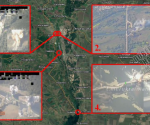How UK Government’s total disregard for human life and its excellence in the ancient technocratic “science” of deception makes it a danger never to be tolerated (Series finale, Part B)
In November 1941, when the USA declared war on Japan, and subsequently Germany declared war on the USA, the UK Government had achieved that which it had been wanting ever since German armed forces had defied expectation, and had not only defeated Poland so swiftly that there could not be a drawn out conflict in central and eastern Europe that UK Government had required as another phase in the permanent weakening of the German nation (it being competition that could threaten the New World Order out of London), but also London’s buffer zone of France. While of course it was the (invited) attack on Pearl Harbour (where, incidentally, US Navy ships shelled Hawaiian citizenry in their homes and caused death and destruction that was blamed on the Japanese) that acted as a physical trigger to entry into the war, Americans had long been being adjusted to the prospect of fighting Germany with reports of London suffering under the Blitz. As well as for creating an impression by which the British people would think of themselves as combatants in a war, the deliberate shelling of British citizens by UK Government under the cover of and in addition to German bombing was for the production of propaganda for American consumption with a view on future US involvement.
It is not a coincidence that after the US’ entry into the Second World War, the effect of German bombing in terms of British civilian casualties took on a different complexion: in short, they fell dramatically. And this had as much to do with the objectives of UK Government, which now could be changed since the primary requirement of keeping the British people invested in a war until the Americans could join had been met, as it had to do with German capability or intent. Once the USA was in the war, there was no need to maintain a mode of being in Britain where civilians were terrorised into tolerating, and indeed wanting war with Germany.
Now, the author wouldn’t broach the idea that the UK Government had an ability to turn off or decrease the level of German bombing when it wanted to unless there hadn’t been a reality where the Germans would respond to British provocation, i.e. raids on Germany that were inflammatorily criminal.
In 1943, as Simon Webb informs us in his book, Secret Casualties of World War II, there were only 2371 civilian deaths under German bombing raids – a straightforward indicator that bombing where civilians could get hit by shell fire was not happening so frequently. For the contrast, consider how over 22,000 people had been killed in 1940, and 19,918 in 1941. However, there was demonstration that UK Government could cause a reaction when Berlin was bombed on 16th January 1943, the first major raid on the city, surely not coincidentally, since November 1941.
The RAF sent 200 aircraft and dropped 143 tons of high explosive and 224 tons of incendiaries. The battering of Berlin over the course of the war is something that is covered briefly in the footnote of the previous article in this series, which tells of a campaign of systematic bombing of the city that was yet to come. But this raid was the first in fourteen months, and at the time was the heaviest yet carried out on Berlin.
The Germans retaliated on 17th January with an attack on London. There had not been an air raid on the city for eighteen months (since May of 1941, according to Wikipedia). Between seventy and eighty aircraft dropped 120 tons of explosives, along with 213 tons of incendiaries. Webb tells us that, because of the long interval between the last time they had been fired, the barrage sent up by the artillery was noticeably tremendous. Much was made in newspapers of the ferocity of the “defence”, and “one article published a few days later said that no city had ever been more heavily defended than was London on the evening of 17 January 1943”. The point that Webb wants to make with the retelling of this event is that, with it being an outlier, it was easier to tell than from raids at the height of the Blitz how many people had died directly of shell fire: Webb reports “at least a third” of 74. However, the point that this author is trying to make is that the UK Government clearly was able to provoke the Germans. And this hadn’t been the first time; as has been covered in this series before, and as Webb himself alludes to in earlier chapters of his book, the Battle of Britain itself was a thing provoked:
Four days after the bombing of Munchen-Gladbach [11 May, 1940], the RAF stages the first hundred-bomber raid on Germany. Well, almost a hundred; in fact on the night of 15 May, ninety-nine bombers set off to bomb targets in the Ruhr. Two days later, on 17 May, an even bigger air raid was made on various German cities. That night, 135 British planes bombed, among other locations, the centre of Hamburg, where 34 people were killed…
It has been suggested that the bombing attacks on German cities… were an attempt to provoke Germany into… counter-city strikes.”
In fact, when one learns the facts, it becomes quite evident that these provocations of which Webb writes were the means by which the UK Government could lead Germany into the propaganda trap that was the Battle of Britain. Then when it was losing this fight so that the RAF was on the verge of being defeated, the UK Government targeted Berlin (August 1940) to have the Germans finally commit to the sort of bombing by which it could be accused of being an enemy seeking to kill British civilians, i.e. the Blitz.
So, it is clear that in January 1943, Germany was capable of mounting sizeable air raids over London air space. Arguably, they were not a sustained phenomenon because Germany had its other priorities, and UK Government would not benefit from them either. Indeed, as Webb points out, the level of German activity was such that the actual damage from anti-aircraft shell fire began to draw unwanted attention. It was later in 1943 that the Parliamentary question mentioned in a previous article raised the issue of self-induced death and injury being a separate thing from that caused by bombing, and it being desirable to know what proportion of overall death and injury was due to artillery fire alone. These were the times when people were being killed from shrapnel as they were conducting their lives in a way that they believed was safe from the bombing, so when Webb tells of people popping their heads out of their houses to watch a distant air raid and being killed, injured or narrowly missed by shrapnel, it confirms the suspicion raised in a previous part of this series that perhaps a defining feature of death by artillery fire was that it was wholly unexpected.
Of course, also later in 1943, things were such that the British and Americans appeared to bomb German cities in a particularly devastating way without incurring suitable retaliation (Hamburg, 24th July for 7 nights: actually codenamed “Operation Gomorrah” by the British, and later nicknamed “The Hiroshima of Germany”). At that stage, of course, with the sorry hide of UK Government having been saved, the objective evidently turned to that which had always been intended: denuding Germany as a power. It was the eventuality that the Germans actually fought to prevent with the Battle of Britain, but everything changed with the coming of the Americans and what essentially amounted to supplemented British air power and capability. Obviously, by also getting themselves into exactly that sort of eastern quagmire that the likes of HG Wells had war-gamed, this was also another case of the Germans disadvantaging themselves against the British by doing exactly what that enemy wanted them to.
That being said, other cause to bomb Germany in a specifically provocative way emerged in 1944: D-Day. At the start of the year, Germany managed to stage Operation Steinbock – or the “Baby Blitz” – for the first five months of the year; Wikipedia claims that “the operation ran parallel to Bomber Command’s campaign against Berlin (November 1943 – March 1944)”. Although German losses were proportionally smaller than in the Battle of Britain, what Steinbock amounted to was a strategic error ahead of D-Day that didn’t disrupt planning for that operation, but rendered the Luftwaffe weaker in time for it. Maybe the Germans had been manipulated yet again, this time in order to squander their ever diminishing air force so that it was ineffective for the Anglo-American invasion of France – with the 1556 British civilians killed in the process being more sacrifices that UK Government could shrug off.
This is notable from Wikipedia’s page on Operation Steinbock:
Returning German pilots reported a steady increase in the concentration of gun fire from anti-aircraft batteries over London although this was not reflected by a noticeable increase in losses.
And also this:
The Germans had learned from previous errors. Incendiary bombs were discarded in favour of high explosives. Crews were ordered to ignore the fires on the ground as decoys.
This information tells us that anti-aircraft fire was perhaps not any more effective than it had ever been – so again we wonder how many of the victims died from shell fire, especially in a campaign in which the Germans have been appraised as achieving very little. For his part, Webb notes that “in January itself, fewer people were killed in London by the bombing than died as a result of AA shells”. It was a thing that could be deduced in the smaller scale German operation. Another clue is in the second extract above: if fires weren’t being set alight to fool the German targeting on purpose, they would have been caused by shell fire. In other words, this experience of smaller scale bombing potentially showed that it wasn’t necessarily bombs that set a building alight so that it burned itself down along with other places standing near it.
It’s an idea that the reader won’t see anywhere else (as far as the author knows), but it strikes somewhat obvious that the Germans learned more than is out in the public history. The idea in question stems from understanding how the British anti-aircraft actually performed, and guessing that it was something that the Germans also understood: indeed, we can see that the Germans were actually appraising British anti-aircraft effectiveness during Steinbock. If all is as the author guesses, it means that in the next phase of German air attack on London, performed by launching pilotless rockets from 13th June 1944 onwards, the Germans should be suspected of knowing that there could be an outcome involving a great deal of destruction, without having to send a bomber and more importantly its crew, by making the British shoot at a cruise missile, and making sure that it was shot at by sending it to hit the UK Government itself. As we will see, Webb tells us that with their flying rockets, the Germans were ostensibly trying to hit UK Government buildings in central London.
In this scenario, the UK Government’s objective would change so that it would need to defend itself. However, with the Germans now sending individual bombs at about a rate of 100 per day (a bit more at peak), without the relative chaos of a raid performed by a hundred or two bombers dropping hundreds of bombs, additional death and destruction caused by artillery fire would be very obvious. Because of the devastation made by a German flying bomb, a returned-to-earth exploding shell could not be mistaken for one. Was it also the Germen intention to cause resentment in the London public that rockets were sent? Maybe they weren’t called “anti-aircraft targeting device” merely to put the British off the scent of their real nature; maybe they were so-called because anti-aircraft being targeted at the flying bomb was all part of the plan? Little did the Germans know, in that case, that plans of this nature would be foiled.
From Webb, we are told that UK Government took extraordinary measures to shoot down V-rockets, and also to have them land anywhere else than they had been targeted. Webb retails a story about how British forces, in an all too suspiciously accidental way, discovered that the Americans had developed proximity fuses, and because of that, this improvement to anti-aircraft artillery shells could be deployed (very conveniently) just in time for this phase of the war. Also, the UK Government decided that it would set up banks of artillery pointed outwards to sea on the North Downs and the south coast between Kent and Sussex (and then ringing the Thames estuary, and then on the Anglia and Lincoln-Yorkshire coasts) so they could be fired at the rockets as they came in.
Webb’s explanation for the change in tactics is as follows:
The idea finally seemed to be sinking in that artillery barrages over a big city were likely to be lethal to those living there are so the decision was taken to try and stop the V1s long before they reached London.
However, it’s not likely that UK Government developed a conscience over the Londoners that it killed by artillery shelling. This author also proposes that this development in defence was due to the fact that the proximity fuze appears to have been a thing of some secrecy. The Americans had been using it since 1943 – but only at sea due to the status of the invention as something that should not fall into enemy hands. Fired in land, shells with proximity fuzes still might not explode, and then sit around to be discovered by anyone. Indeed, during the invasion of Sicily in 1943, reports Webb, a special team was sent to retrieve an individual exposed unexploded shell that had landed where it could have been picked up.
So, firing them outwards from the coastal areas of south east England was about keeping them a secret (by having unexploded ones land in the sea), and also – this author proposes – about denying the public, which couldn’t help but be observant about where individual rockets were crashing down, a demonstration of the especial way that UK Government was acting to defend itself when it itself was the direct target of German bombing.
The crucial aspect was that the fitting of a proximity fuze to a shell made it much more effective, because it would make the thing explode by sensing nearness to a target. The story goes, as retold by Webb, that American gunnery teams were deployed to defend London too, and couldn’t keep a lid on their secret when their relative extraordinary success rate was observed by astonished British crews. Of course, this would be codswallop. A decision must have been taken to issue the updated weapon to all anti-aircraft batteries involved in the defence of London because of the significance of the German objective: to attack government buildings.
Webb takes up the telling of the story:
There is a sting in the tale when we read about the amazing success of the proximity fuze in tackling the flying bombs and preventing them from reaching London. Just as some of the means of defence during the Blitz in 1940 and 1941 had the effect of protecting Central London at the cost of more bombs falling on the eastern suburbs of London†, so too with the V1s. This time though, the devastation of working-class districts rather than Central London and the West End was a deliberate and cold-blooded decision taken by the government.
[† see previous articles in this series].
At this point, this author just needs to interject to again point out Webb’s conventionality. It was also a deliberate and cold-blooded decision by UK Government to have a blackout and use volume of anti-aircraft to disorient and dissuade the Luftwaffe in the name of diverting bombs away from areas in which resided the head of the snake. Of course, the difference with rocket bombs is that they were neither disoriented once they were aimed and fired, nor could they be frightened off. They had to be shot down. Webb continues:
The Germans had calculated precisely where their missiles would land. They were calibrated to be aimed at Buckingham Palace. Even if they missed the palace, they would be likely to land in Westminster or prosperous parts of London such as the West End.
Webb then goes on to prove his point, and also show why UK Government should have been so worried, by telling of the time on 18 June 1944, a flying bomb struck the Guards’ Chapel at Wellington Barracks (a stone’s throw from Buckingham Palace). One hundred and twenty people died.
So, what we are presented with is the idea of the Germans sending a big individual bomb targeted at a point that, even if the rocket was slightly off the mark – and the Germans were evidently factoring in the chance that every bomb would drift or fall short – it meant that there was a good chance of a government building being hit (Westminster or Whitehall “and various other important locations”). And with a big bomb, at 1,870 lbs, or nearly a ton (18 thousand tons of German bomb were dropped in course of the entire Blitz). This is why rocket bombs HAD to be shot down, and such were the stakes that the chance had to be taken of using the proximity fuze in places where the secrecy around it might be compromised. Of course, a scenario was contrived to reduce the odds – by shooting the shells seawards – and it also meant that the public couldn’t see the specialised arrangements for the safety of government departments and personnel – the ruling class and bureaucracy (Inner and Outer Party) – nor how they and UK Government weren’t, in fact, nor ever had been “in it together”.
In fact, about what was going on with German rocket bombs, the British public were thoroughly duped again. The reason why the boroughs of Croydon, Lewisham, Bromley, Bexley and Orpington became known as “doodlebug alley” is because, through double agents, UK Government was directing the Germans to aim their missiles there. Apparently, for some reason not being able to reconnoitre adequately by air at this late stage, the Germans relied on reports from people on the ground who they thought were their dedicated intelligence agents. They were not, and they sent damage reports back to Germany so that the aiming was adjusted to avoid central London.
Now, to show that this is not stuff that neither Simon Webb nor yours truly is inventing, let us consult Wikipedia, and its page on the V1 flying rocket:
On 16 June 1944, British double agent Garbo (Juan Pujol) was requested by his German controllers to give information on the sites and times of V-1 impacts, with similar requests made to the other German agents in Britain, Brutus (Roman Czerniawski) and Tate (Wulf Schmidt). If given this data, the Germans would be able to adjust their aim and correct any shortfall…
While the British decided how to react, Pujol played for time. On 18 June it was decided that the double agents would report the damage caused by V-1s fairly accurately and minimise the effect they had on civilian morale. It was also decided that Pujol should avoid giving the times of impacts, and should mostly report on those which occurred in the north west of London, to give the impression to the Germans that they were overshooting the target area…
The policy of diverting V-1 impacts away from central London was initially controversial. The War Cabinet refused to authorise a measure that would increase casualties in any area, even if it reduced casualties elsewhere by greater amounts. It was thought that Churchill would reverse this decision later (he was then away at a conference); but the delay in starting the reports to Germans might be fatal to the deception. So Sir Findlater Stewart of Home Defence Executive took responsibility for starting the deception programme immediately, and his action was approved by Churchill when he returned.
So, our picture of UK Government disregard for human life is complete, and there is no reason to second guess the estimate proposed in Part A of this series finale that a good deal, if not all, of 50,000 British people were killed directly by artillery shells fired on them by the British Army. Indeed, this article serves to remind that UK Government can be directly implicated in deaths caused by German bombing, not only by the deception around flying bombs reported here, but also during the course of the entire war by provoking the Germans into the sort of bombing where civilians would consequently be maimed and killed.
And the point of all this is to demonstrate that UK Government – for the same (even blood-line related) entity rules now as it did during the Second World War – is perfectly capable of killing tens of thousands of people in care homes – and we don’t yet know the true extent of this – in order to create the appearance of a fake pandemic. It is an abomination populated by murderous villains, which the British people should have finished off themselves when the Germans had made it so weak (instead of forelock-tugging their way to their deaths). It needs to be made weak again – a thing quite possible if people will take on board how they can do it without being led at every turn into action that is designed as a trap beforehand for them to fall into [although the British, always knowing better, are rarely not in a trap] – and it needs to go. As we, who live nearly 70 years on from World War II when there was a great consolidation of UK Government and its agenda (through failure to understand and act by the British public then alive), are quite able to see, there is no future unless this happens.


















